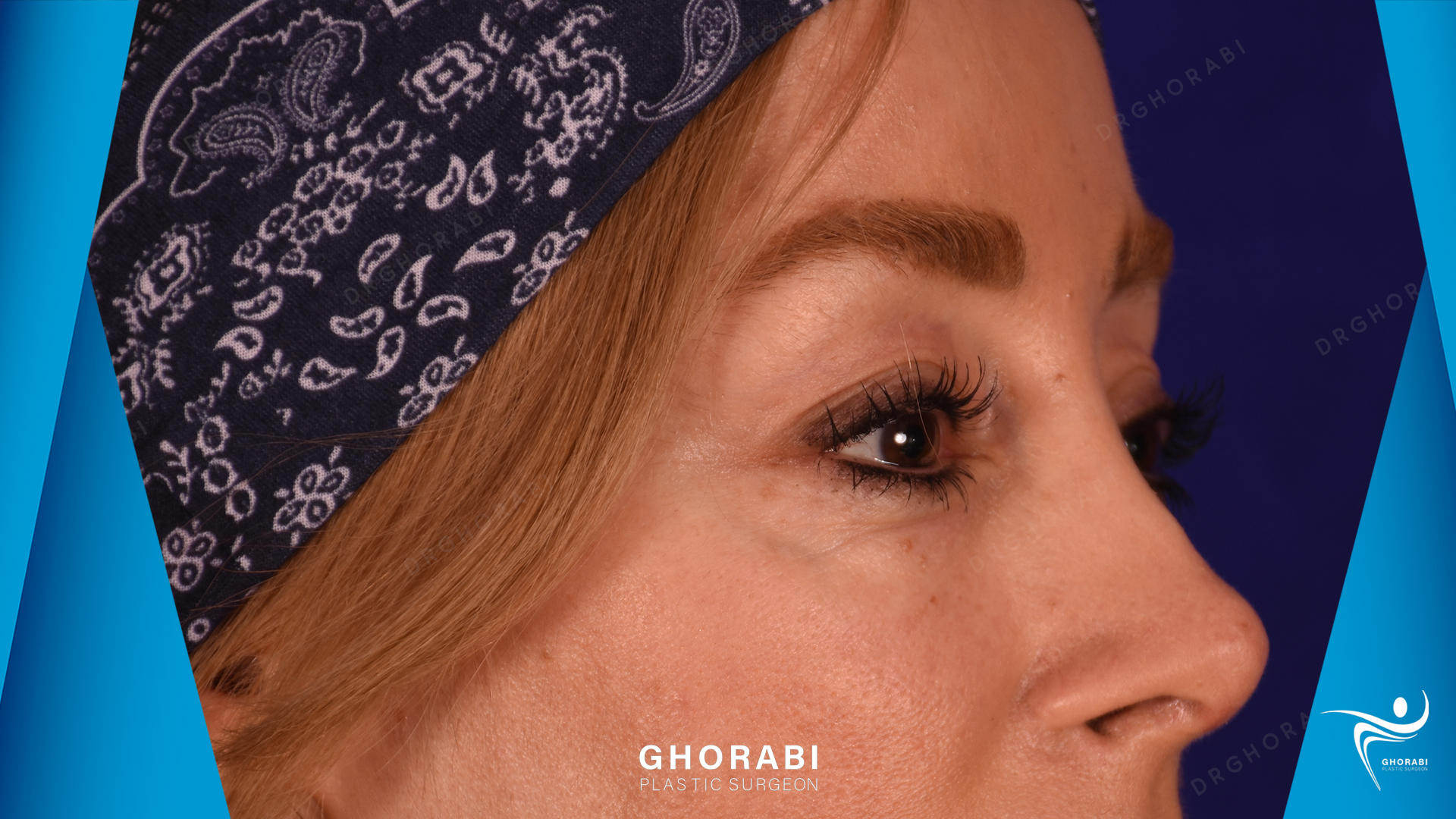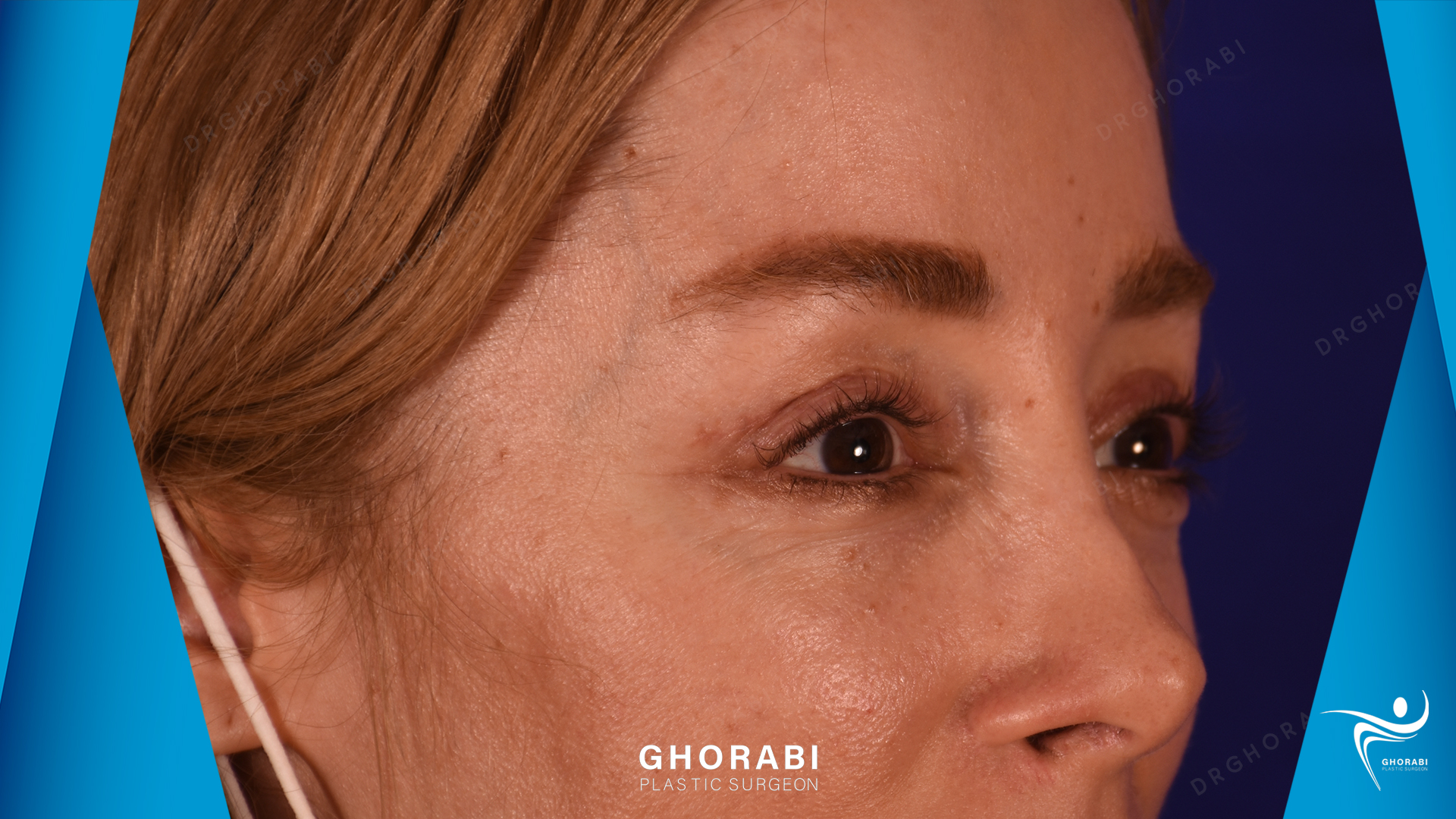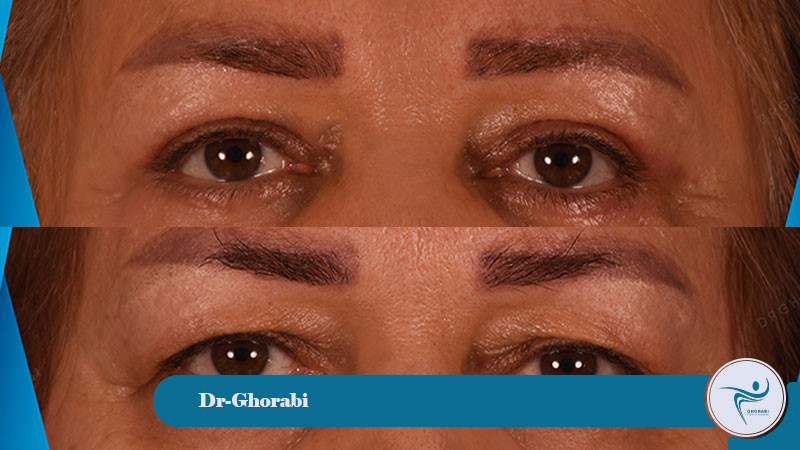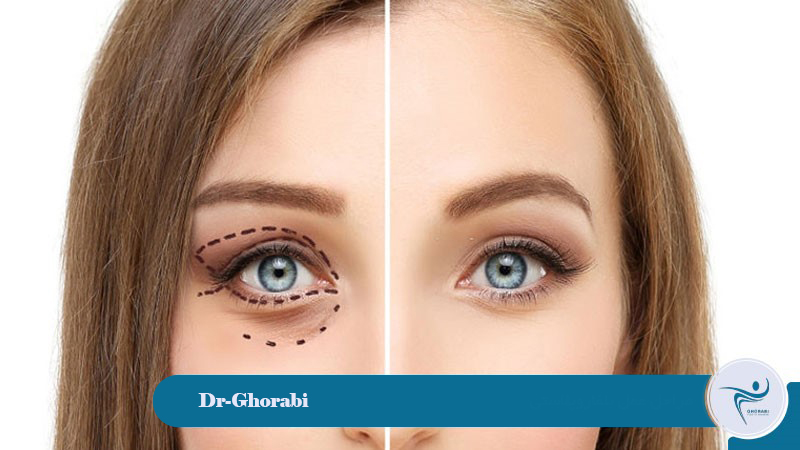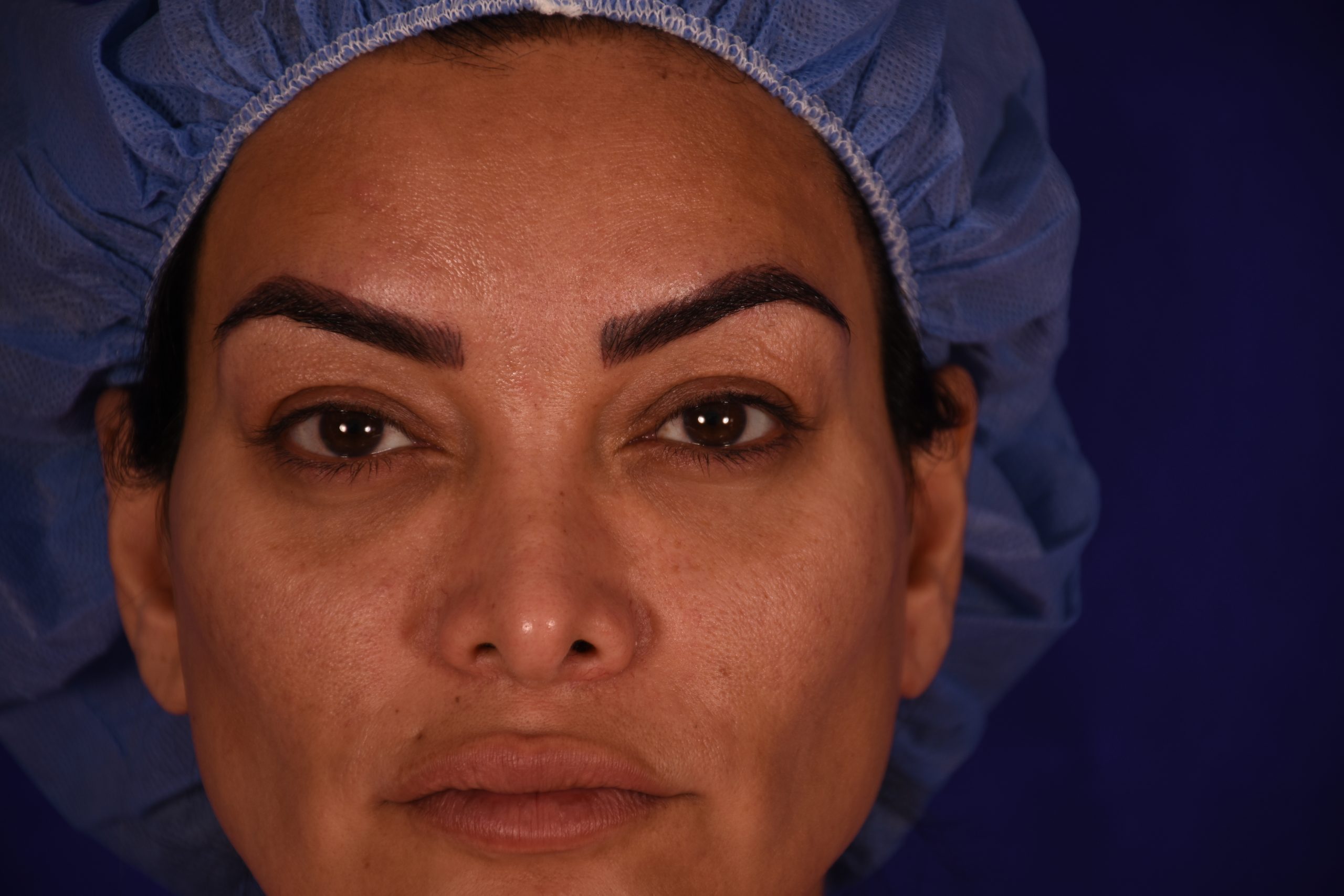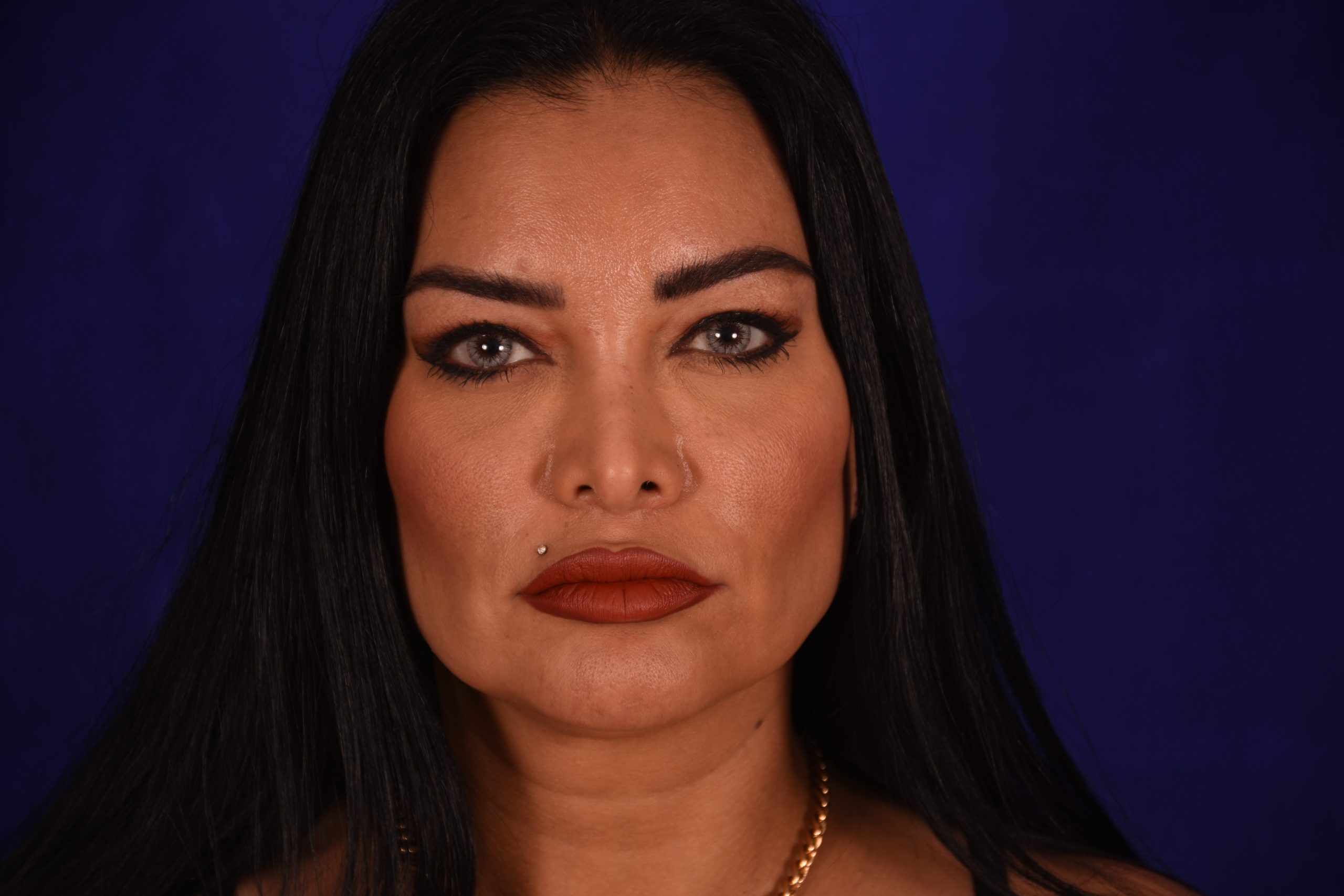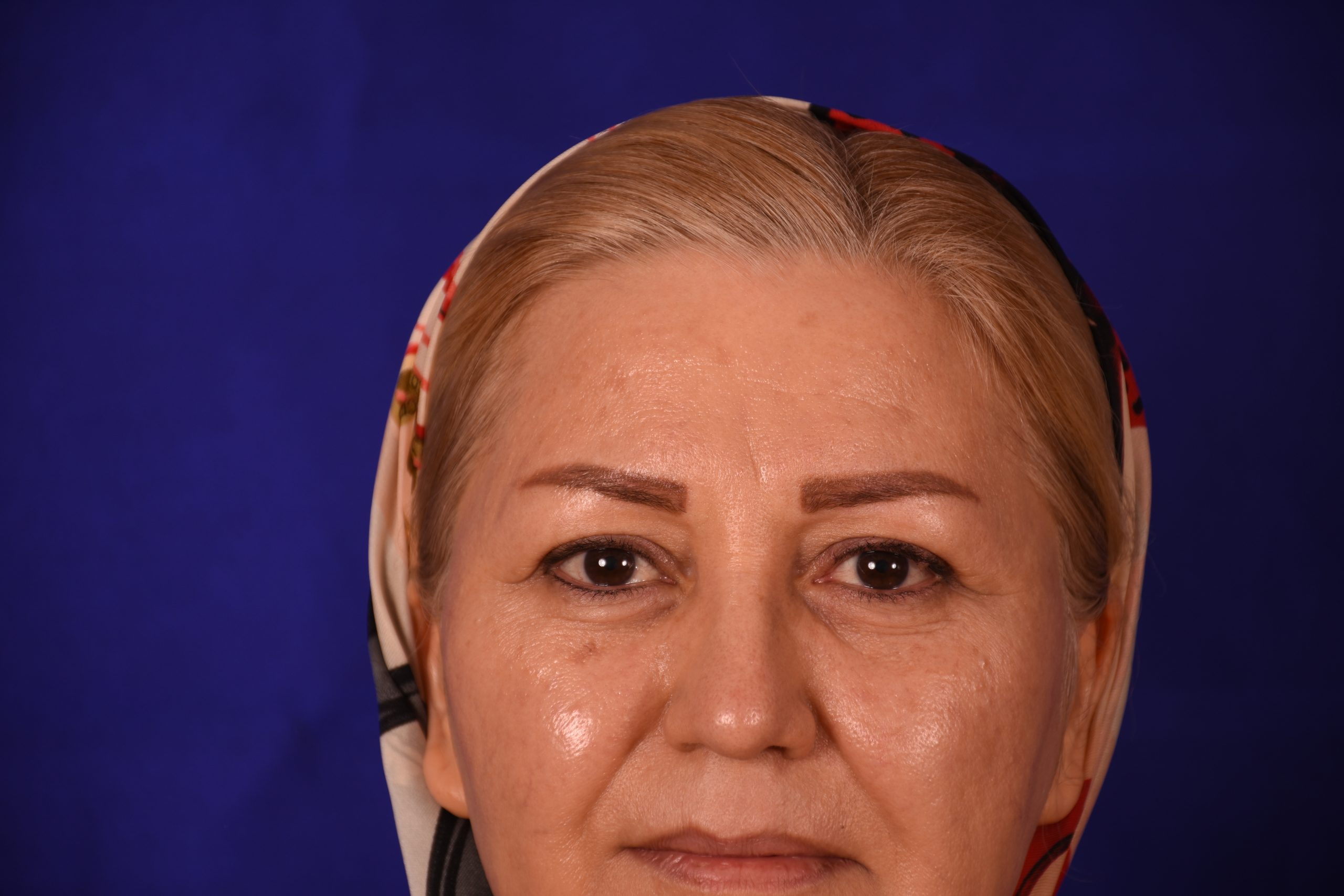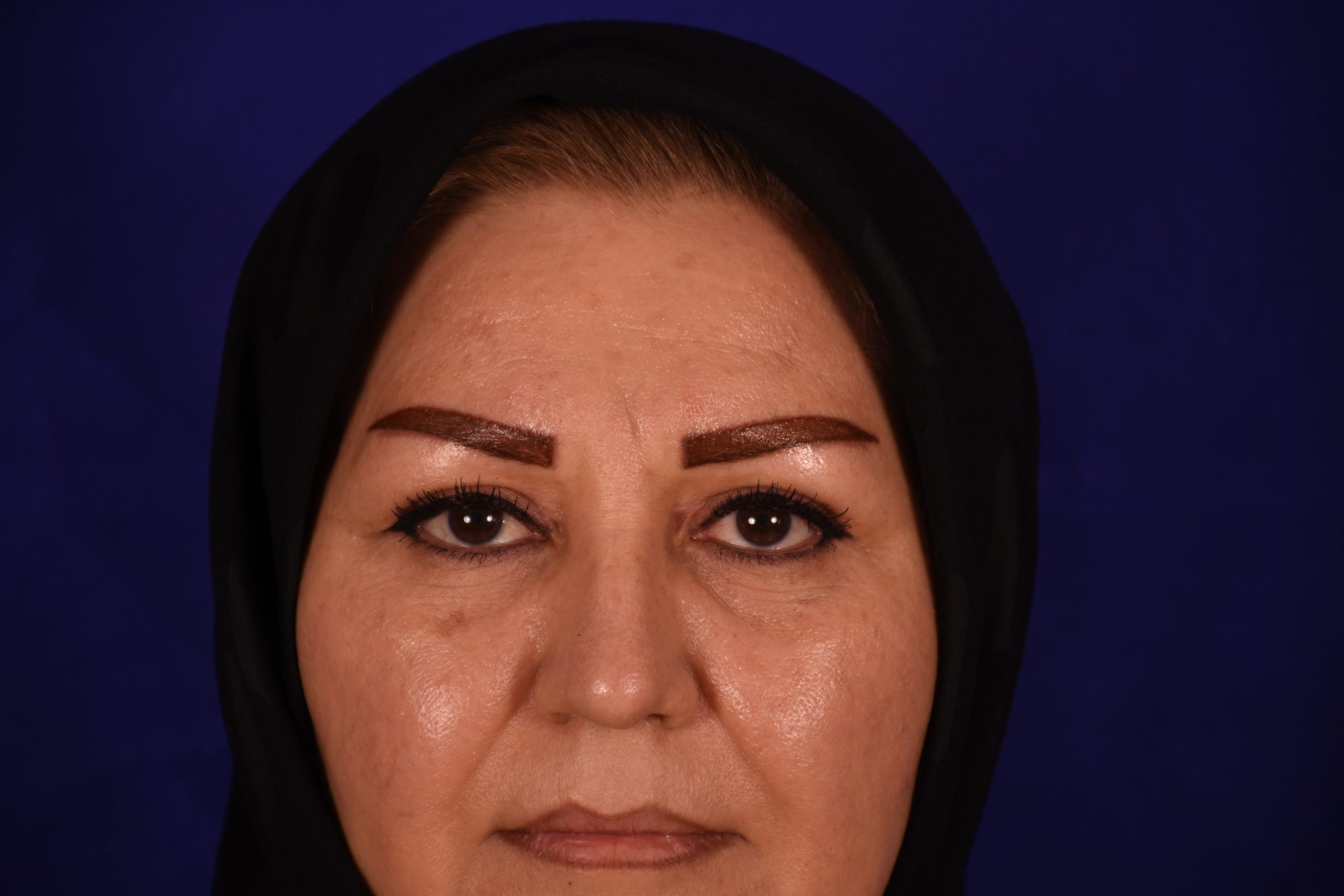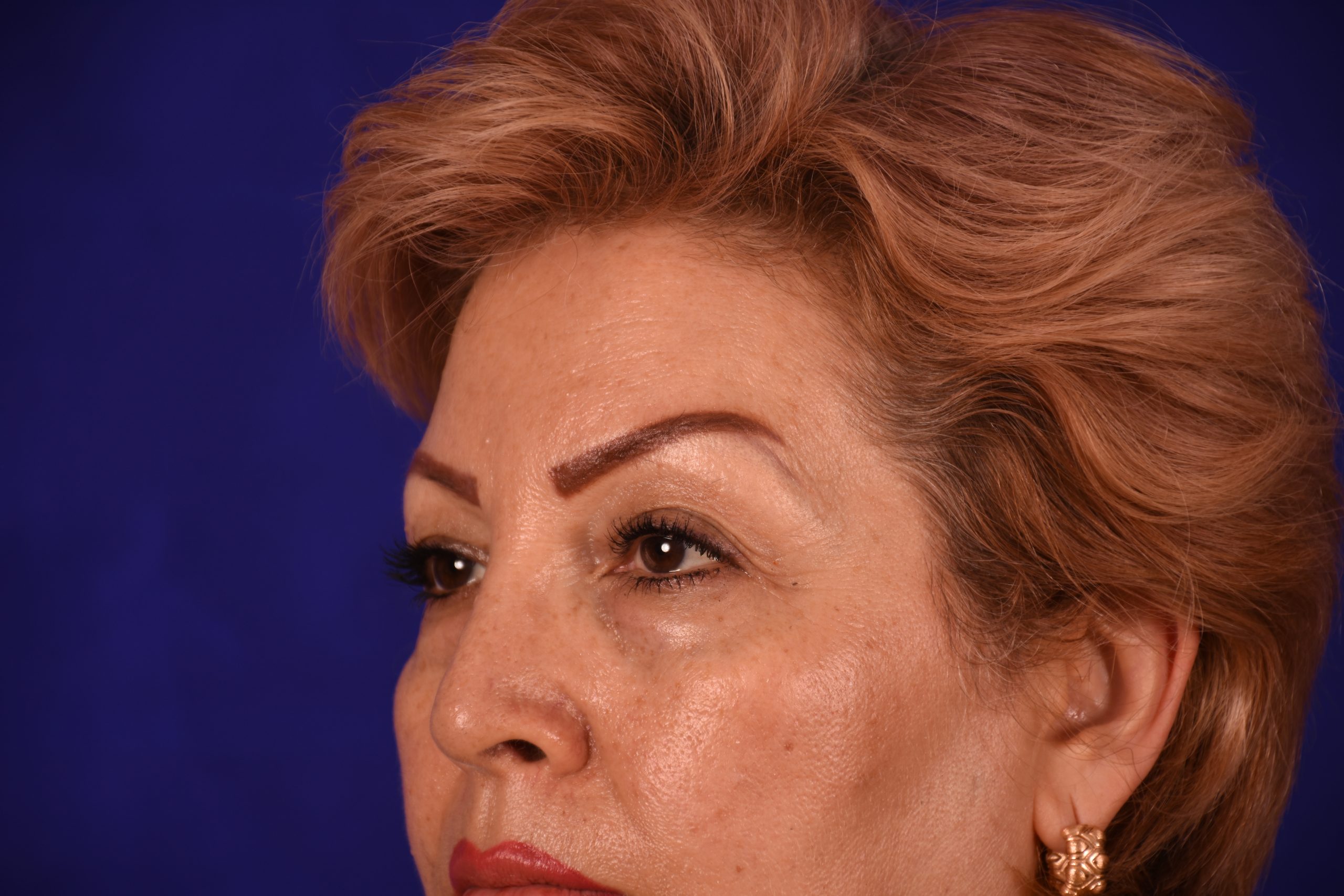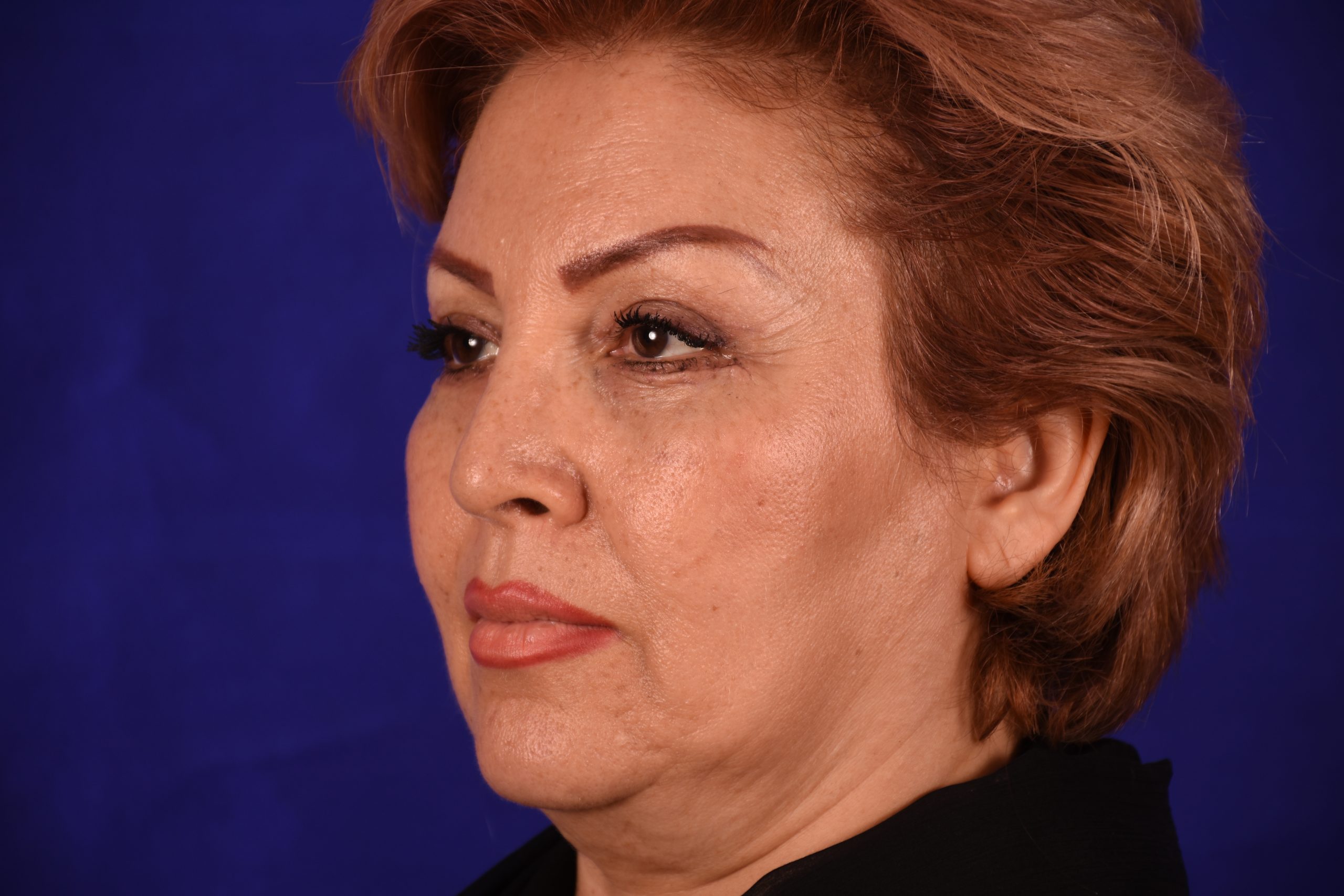Blepharoplasty, or eyelid surgery, is a modern procedure to correct drooping eyelids, puffiness under the eyes, and wrinkles around them. This surgery is performed in two models: upper eyelid blepharoplasty and lower eyelid blepharoplasty, and can be performed using various methods, including traditional surgery, laser, and plasma jet.
Types of blepharoplasty surgery
Blepharoplasty techniques vary, and depending on your individual circumstances, the surgeon will choose the best method. People who are dissatisfied with the tired and aged appearance of their face and whose drooping eyelids limit their vision are suitable candidates for blepharoplasty. Contact us for a free consultation and information about the blepharoplasty procedure at Dr. Ghorabi Clinic.
Blepharoplasty, a cosmetic surgery procedure, comes in two main types: upper eyelid surgery to correct drooping upper eyelids, and lower eyelid surgery to correct puffiness and wrinkles under the eyes. Both procedures help rejuvenate and improve the appearance of the eyes.
Upper eyelid blepharoplasty surgery
Upper eyelid blepharoplasty, a common procedure in facial plastic surgery, is performed to correct drooping upper eyelids. In this procedure, the surgeon removes excess skin and fat and tightens the muscles by making fine incisions along the eyelid line. Blepharoplasty techniques vary and include traditional blade-based methods and more modern methods such as lasers. Sometimes, for better results and complete facial rejuvenation, forehead lift surgery will be recommended at the same time as upper eyelid blepharoplasty. The method chosen depends on the patient’s condition and the surgeon’s opinion.
Lower eyelid blepharoplasty
Lower eyelid blepharoplasty is a cosmetic blepharoplasty procedure performed to remove under-eye bags, fine lines, and sagging skin. In this procedure, incisions are usually made under the eyelashes or inside the eyelid, excess fat is removed, and the skin is tightened. Lower blepharoplasty techniques vary and depend on the extent of skin problems and under-eye fat and the opinion of the cosmetic surgeon. The ultimate goal is to create a younger, more youthful appearance in the under-eye area.
Blepharoplasty surgical methods
Blepharoplasty, as a cosmetic procedure for the eyelid, can be performed using several methods, and choosing the appropriate technique depends entirely on the individual characteristics of each patient. Types of blepharoplasty procedures include:
Ultimately, after carefully evaluating the patient’s condition, the specialist surgeon will determine the best blepharoplasty procedure to achieve the desired results.
Blepharoplasty procedure steps
Blepharoplasty, which is part of a facelift, begins with local anesthesia or general anesthesia. The surgeon makes small incisions in the crease of the upper eyelid and under the eyelashes of the lower eyelid. Through these incisions, excess skin, muscle, and fat are removed or subtly repositioned to correct puffiness and drooping eyelids.
In some cases of the lower eyelid, the incision is made from within the conjunctiva so that the scar is not visible. Finally, the incisions are closed with very fine stitches. The recovery period includes swelling and bruising that gradually improve. The stitches are usually removed after about a week. Careful preoperative consultation and realistic expectations of the results of the facelift and blepharoplasty are essential to achieve complete satisfaction.
Suitable candidate for blepharoplasty
To achieve the best results from blepharoplasty surgery, which is a delicate and sensitive procedure for rejuvenating and correcting eyelid problems, it is of utmost importance to select the right candidates. The key characteristics of an ideal candidate go beyond a desire for aesthetic appearance and include more important aspects that directly affect the success of the procedure, the healing process, and the individual’s ultimate satisfaction. Below, we will discuss each of these characteristics in detail to provide a more comprehensive understanding of the ideal blepharoplasty candidate:
- People who are in good general health and do not have any serious chronic diseases under control.
- People who do not smoke, as smoking interferes with the healing process.
- People who have a clear understanding of the results of the procedure and know that blepharoplasty does not stop the aging process.
- People who have drooping upper or lower eyelids due to excess skin and fat.
- People whose drooping eyelids have limited their side vision.
- People who are dissatisfied with the appearance of puffiness or bags under the eyelids.
- People who want to eliminate the tired and withered appearance caused by drooping or dark eyelids.
- People who have vision problems caused by drooping eyelids that affect daily activities.
- People who have recurrent eye infections or inflammation due to drooping eyelids.
- People who have persistent swelling of the eyelids that has not improved with non-surgical methods.
- Those who are looking to improve the appearance of their eyelids and have a younger, more refreshed face.
It is recommended that you consult with Dr. Ghorabi, a cosmetic specialist, before undergoing blepharoplasty so that she can make the most appropriate decision by carefully examining your condition.
Result of blepharoplasty
The results of blepharoplasty surgery appear gradually and in specific phases. In the initial phase, after the operation by the cosmetic surgeon, edema (tissue swelling) and ecchymosis (bruising) appear in the surgical area, which is a physiological phenomenon and generally subsides noticeably within 2 to 4 weeks. At this stage, the first signs of improvement in the eyelid contour are visible.
The intermediate phase is a stage of gradual refinement and tissue reconstruction; with the complete disappearance of edema and the repair of structures, the final form of the eyelids becomes more apparent, a process that may take up to 6 months.
In the final phase, after the tissue condition has stabilized, definitive aesthetic results will be achieved, including improved eyelid morphology, improved visual field (if ptosis was present before the procedure), and a more youthful and refreshed appearance. It is worth noting that blepharoplasty does not have a permanent anti-aging effect and changes in the eyelid area can be expected due to the natural aging process, however, a significant and lasting improvement in the appearance and self-confidence of the individual is achieved.
Blepharoplasty eyelid surgery recovery
The recovery period for blepharoplasty often lasts about two weeks. Edema and ecchymosis (swelling and bruising) in the surgical area are common phenomena during this period, which gradually decrease. The use of local cold compresses in the first 48 hours is soothing and accelerates the process of inflammation subsiding.
Light activities such as gentle walking are recommended. Sutures are usually removed between 7 and 10 days after surgery, and most patients are able to resume routine activities at this time. Final aesthetic results may take several months to appear.
Dr. Ghorabi's Portofilo
Cost of upper and lower eyelid blepharoplasty
The cost of blepharoplasty varies and depends on several factors. The most important of these factors are the surgeon’s expertise and experience, the clinic’s geographic location, the type of surgical procedure (upper, lower, or both eyelids), and the facilities of the surgical center.
The cost of anesthesia, post-operative medications, and follow-up visits will also be added to the final price. Due to this variability, it is not possible to provide an exact fixed figure. To find out the cost of blepharoplasty for your specific situation, it is essential to consult with a plastic surgeon and receive a personalized price estimate. Remember, choosing an experienced and skilled surgeon is more important than a low price in achieving satisfactory results.
Durability of blepharoplasty surgery
Blepharoplasty is not permanent, but its results are long-lasting. Most people enjoy youthful eyelids for 10-15 years or more. Removing excess skin and fat can delay the effects of aging, but the natural aging process continues.
Lifestyle factors, such as skin care and sun protection, help to prolong the results. Over time, minor touch-ups may be needed, but blepharoplasty significantly improves the appearance of the eyelids.
Blepharoplasty with Dr. Ghorabi; Restoring Youth and Beauty to Your Eyes
Dr. Gholamhossein Ghorabi, a plastic surgeon and blepharoplasty specialist, uses modern surgical methods to give your eyes a youthful and fresh look. The benefits of this procedure include the removal of drooping eyelids, puffiness under the eyes, and improved vision. Dr. Ghorabi creates natural and lasting results with delicate incision methods and advanced techniques. In addition to blepharoplasty, he also performs facial fat injection services, weight loss procedures, and facial plastic surgeries to bring you complete facial rejuvenation. With Dr. Ghorabi, ensure the beauty of your eyes.
About DR. Ghorabi
Get to know/Meet Dr. Ghorabi.

About DR. Ghorabi
Get to know/Meet Dr. Ghorabi.
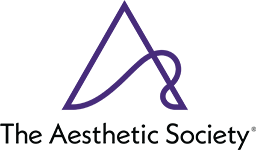
Fellow of the American Academy of Facial Plastic and Reconstructive Surgery (AAFPRS) or a similar organization such as the American Society of Plastic Surgeons (ASPS).

Official member of the International Society of Plastic and Aesthetic Surgeons
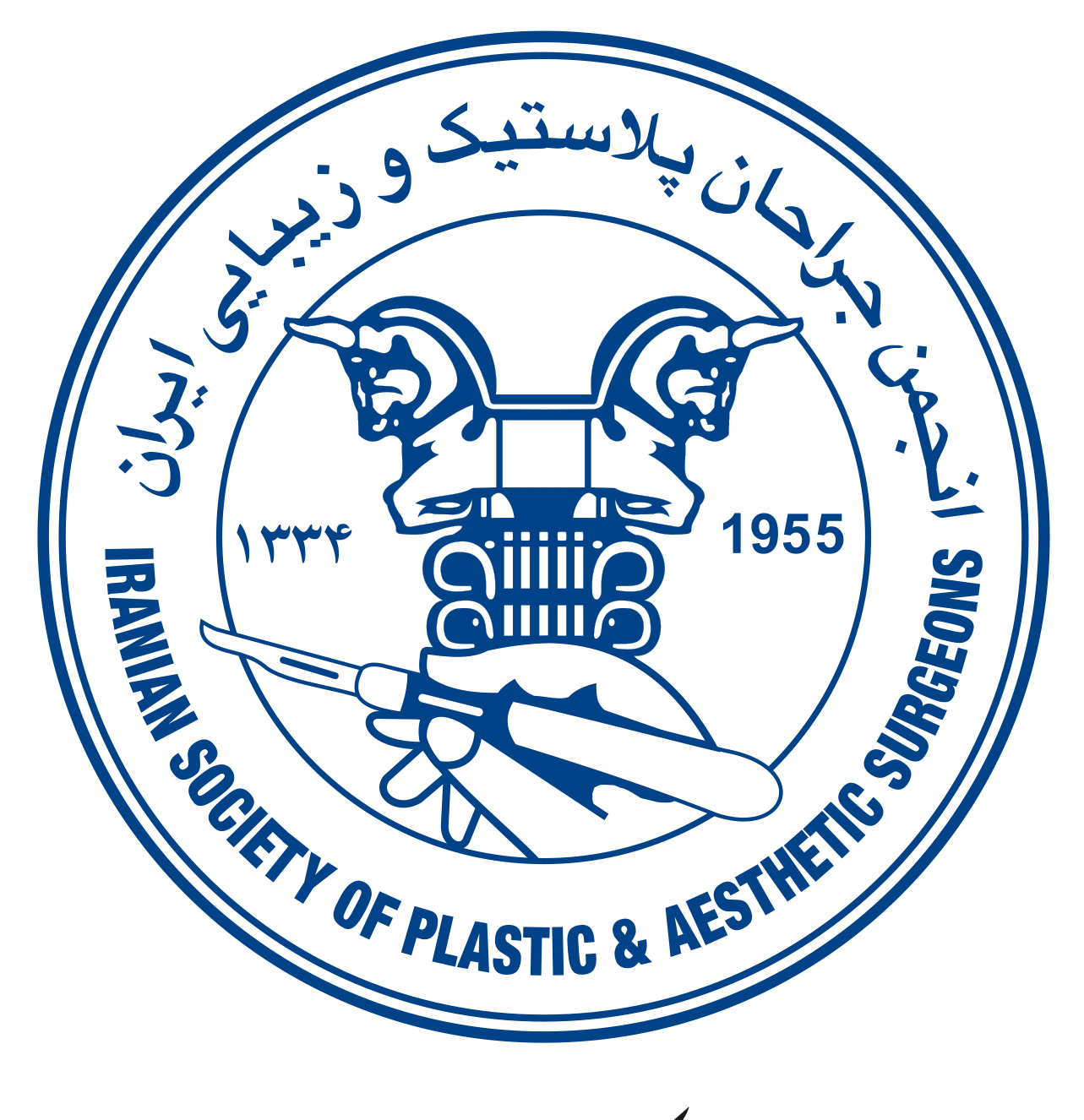
Official member of the Iranian Association of Plastic and Reconstructive Surgeons
FAQs
What are the types of blepharoplasty at Dr. Ghorabi's clinic?
Upper eyelid, lower eyelid, non-surgical blepharoplasty with laser and traditional surgery.
Who are good candidates for blepharoplasty?
Healthy people with droopy eyelids, puffiness under the eyes, and realistic expectations.
What are the steps of blepharoplasty?
Eyelid incision, skin/fat removal, fine stitches; under local anesthesia or general anesthesia.
How long does the blepharoplasty recovery period last?
About two weeks; swelling and bruising gradually decrease.
How long does blepharoplasty last?
Long-term results; 10-15 years or more with proper care.
How much does blepharoplasty cost?
Variable; depending on the type of procedure, surgeon, and clinic; consultation is required for accurate information.
